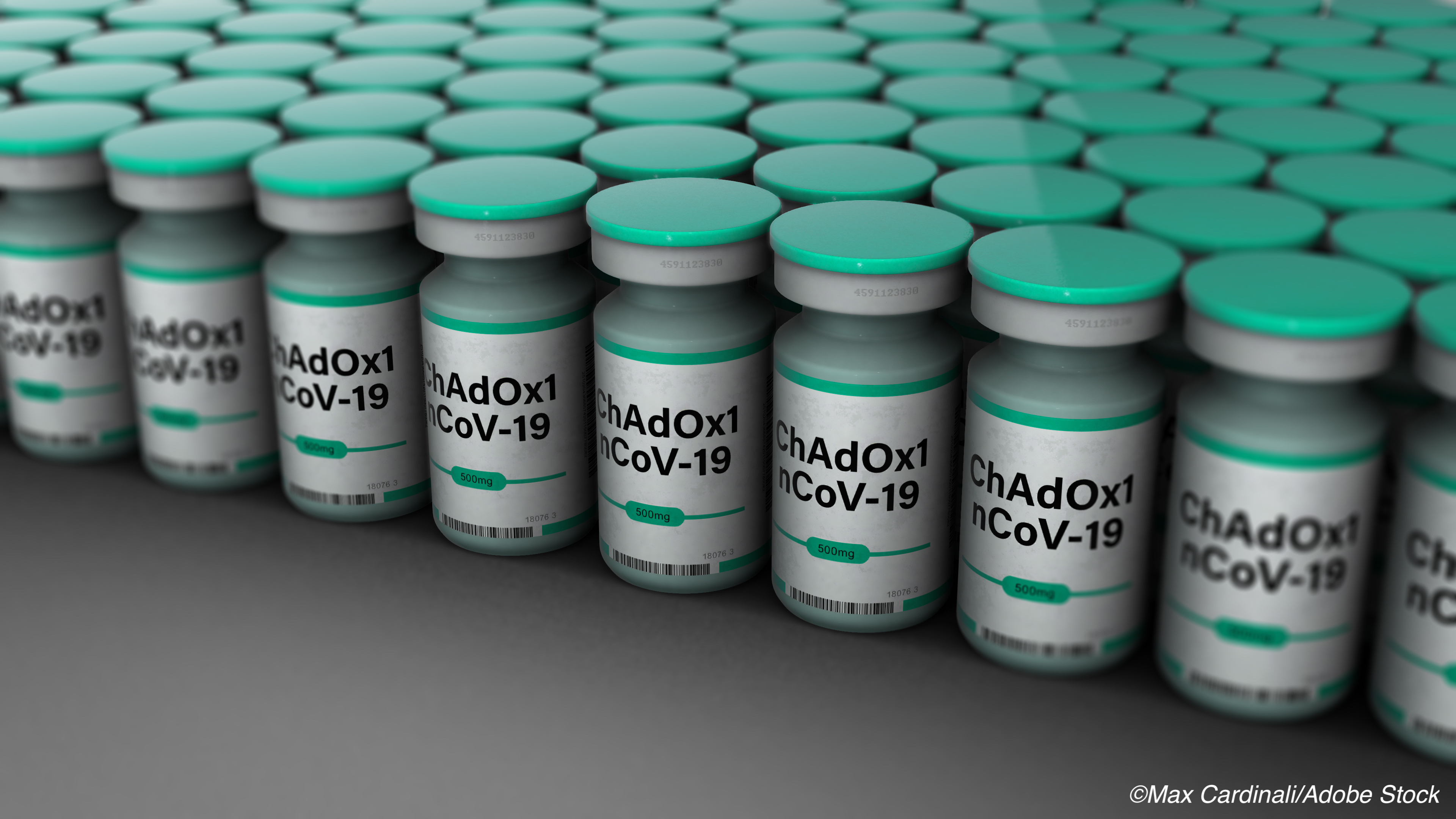
A recent pooled analysis of four studies assessing vaccinations with two doses of the ChAdOx1 nCoV-19 vaccine confirm the efficacy of the vaccine; however, U.K. researchers found that a three-month dosing interval may be preferable to protect the most individuals as soon as possible and provide improved protection after administration of a second vaccine.
The U.K. Medicines and Healthcare products Regulatory Agency has approved emergency use of the ChAdOx1 nCoV-19 vaccine, a chimpanzee adenoviral vectored vaccine with full length SARS-CoV-2 spike insert developed at the University of Oxford. A regimen of two standard doses administered with an interval of 4-12 weeks is recommended.
Early trial results for this vaccine have been a matter of debate ever since interim trial results released in December 2020 seemed to show that ChAdOx1 nCoV-19 was more effective at a lower dose, a misunderstanding that arose from a dosing error resulting in some patients receiving a half dose for their first shot. However, these latest results from the Oxford Covid Vaccine Trial Group, led by Merryn Voysey, DPhil, of the University of Oxford, Oxford, U.K., began circulating prior to peer-review early this month due to results suggesting that, in addition to possibly slowing onward transmission of the virus, this increased vaccine efficacy was a result of a longer dosing schedule, not a smaller dose.
“Exploratory analyses are presented in this report that show protection with dosing intervals from less than 6 weeks to 12 weeks or more and that a longer interval provides better protection after a booster dose without compromising protection in a 3-month period before the second dose is administered,” Voysey and colleagues reported in The Lancet.
For this analysis, Voysey et al used data from three single-blind randomized controlled and one double-blind phase I/II study, which included 17,178 adults randomized to two standard doses of ChAdOx1 nCoV-19 (5×1010 viral particles) or a control vaccine or saline placebo. In the phase I/II study in the U.K., some participants received a lower dose (2.2×1010 viral particles) for the first dose. All participants were SARS-CoV-2 N protein seronegative at baseline, with no evidence of previous infection.
Voysey and colleagues found the following results:
- Overall vaccine efficacy over 14 days after the second dose was 66.7% (95% CI 57.4-74.0).
- Vaccine efficacy after a single standard dose from day 22 to day 90 postvaccination was 76.9% (95% CI 59.3-85.9), but was not effective against asymptomatic infection, with an efficacy of −17.2% (95% CI −248.6 to 60.6).
- Among the 8,597 participants in the ChAdOx1 nCoV-19 vaccine group, 1.0% cases occurred, compared with 2.9% among controls.
- In the ChAdOx1 nCoV-19 vaccine group, no hospitalizations occurred after the initial 21-day exclusion period, compared with 15 hospitalizations among controls.
- Serious adverse events occurred in 0.9% of the 12,282 participants in the ChAdOx1 nCoV-19 group, versus 1.1% in the 11,962 controls.
- Seven deaths occurred but were unrelated to vaccination (two in the vaccinated group vs five in controls) and included one Covid-19-related death in the control group.
Modelling analysis demonstrated that there was no diminishing of protection during the initial three-month post-vaccination period. In addition, antibody levels were maintained, and researchers saw minimal waning by day 90 (geometric mean ratio [GMR]: 0.66; 95% CI 0.59-0.74).
Importantly, among patients who received two standard vaccine doses, efficacy was higher in those with a longer prime-boost interval (vaccine efficacy: 81.3% at ≥ 12 weeks; 95% CI 60.3-91.2) compared with those with a short interval (vaccine efficacy: 55.1% at ˂ 6 weeks; 95% CI 33.0-69.9).
Researchers also reported that immunogenicity data demonstrated binding antibody responses that were over two-fold higher after an interval of greater than or equal to 12 weeks, compared with one of less than 6 weeks in patients 18-55 years old (GMR: 2.32; 95% CI: 2.01-2.68).
“The primary analysis supports the findings reported in the interim analysis that the vaccine is efficacious and safe. Exploratory analyses show that higher vaccine efficacy is obtained with a longer prime-boost interval, and that a single dose of vaccine is efficacious in the first 90 days, providing further evidence for current policy,” concluded Voysey and colleagues.
Study limitations include that the original studies were not designed to establish whether vaccine efficacy varied according to dosing interval, the short duration of follow-up after the second vaccine dose, and differences in patient cohorts.
- Two doses of ChAdOx1 nCoV-19 effectively prevents symptomatic Covid-19, according to results from a pooled analysis of four randomized trials.
- The optimal dosing interval seems to be 3 months, or 90 days, according to researchers from the Oxford Covid Vaccine Trial Group.
Liz Meszaros, Contributing Writer, BreakingMED™
This study was funded by the UK Research and Innovation, National Institutes of Health Research (NIHR), The Coalition for Epidemic Preparedness Innovations, the Bill & Melinda Gates Foundation, the Lemann Foundation, Rede D’Or, the Brava and Telles Foundation, NIHR Oxford Biomedical Research Centre, Thames Valley and South Midland’s NIHR Clinical Research Network, and AstraZeneca.
Voysey reported no disclosures.
Cat ID: 190
Topic ID: 79,190,730,933,190,926,192,927,151,928,925,934



Create Post
Twitter/X Preview
Logout